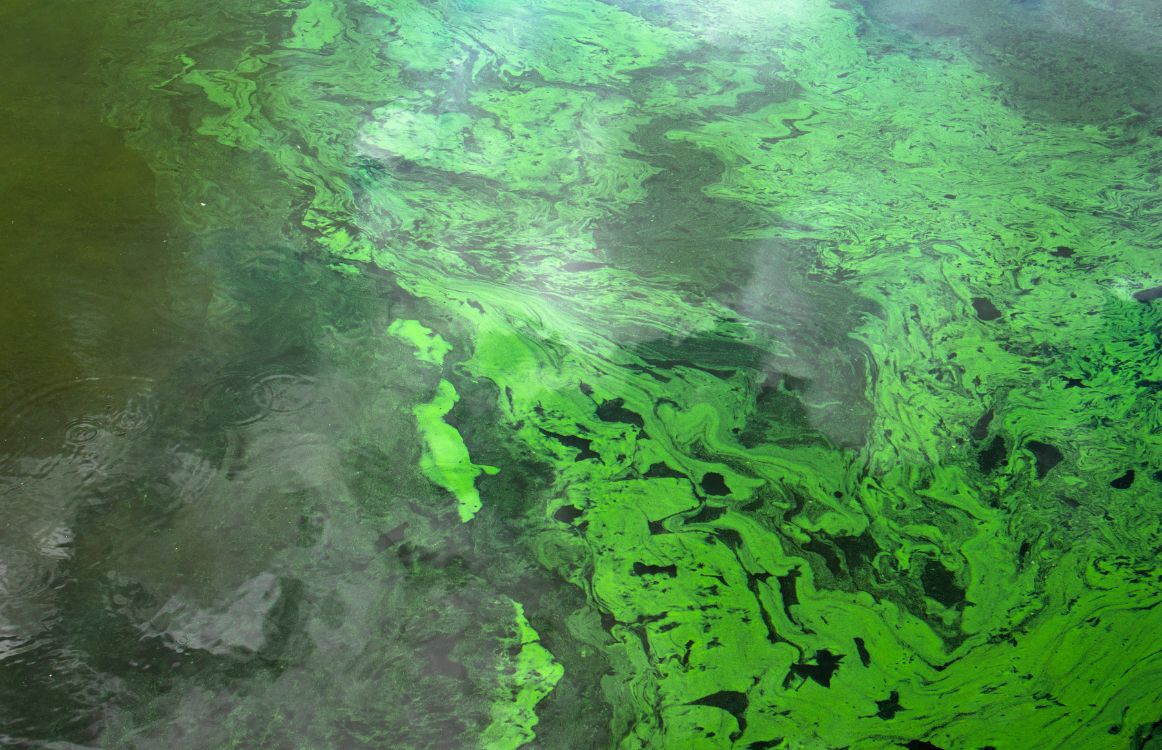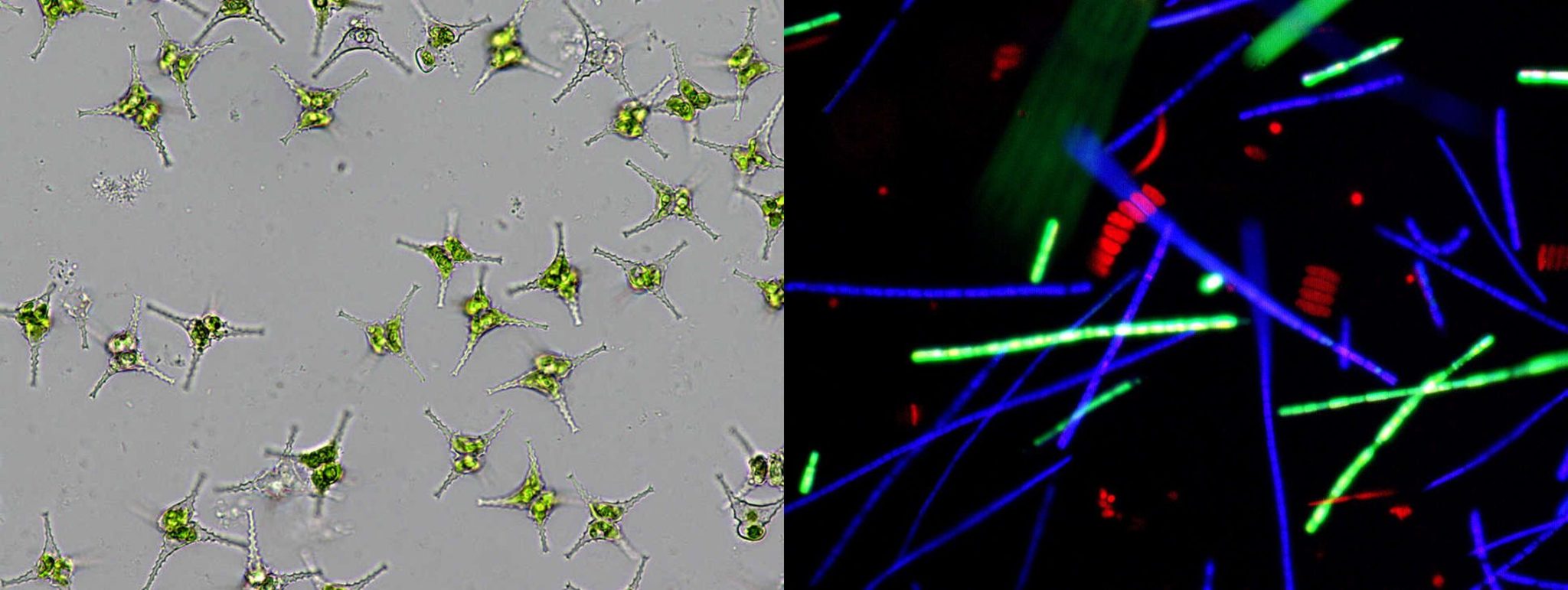How to Identify Blue Green Algae
You may have heard of blue green algae for a number of reasons. News stories abound about children getting sick from swimming in local waterways. Others are filled with dogs getting sick and even dying from drinking from lakes and rivers. And of course, there is spirulina! The wonder supplement. All of these examples can be tied back to blue green algae, a bacteria found in local water often used for brewing at local breweries.

What Is Blue Green Algae?
So, what is blue green algae? As noted above, it is a type of bacteria that is likely as old as life on earth. Its scientific name is cyanobacteria, coming from the Greek word “kuanós,” which means “blue.” Blue Green Algae essentially forms the basis for most of life on earth. Together with microalgae, it supports the production of oxygen and photosynthesis and provides food for many aquatic animals in freshwater environments.
Is Blue Green Algae Harmful or Helpful?
A common question is whether blue green algae is harmful or helpful. After all, children are getting sick, and dogs are dying. Visit virtually any lake around the world during late summer and early fall and you’re likely to see signs posted warning of the dangers of blue green algae in the water.
Blue green algae can indeed be harmful, but only when it blooms. These blooms are called blue green algal blooms, and in that state, they can produce toxins that are harmful to humans, animals, and other aquatic life.
There is a delicate balance that must be struck in fresh bodies of water, particularly in lakes, wherein too few nutrients can produce certain damage, and too many nutrients can produce another kind of damage. In the case of blue green algal blooms, the problem is an abundance of nutrients. Together with warm water, lots of sun, and little wind, these blooms spring up and can cause real harm.
Also read: Microalgae Culture Techniques & Management Optimization
Humans can get skin irritations, and if they drink the water with blooms, they can vomit and get diarrhea, among other awful symptoms. And yes, dogs can die as a result of drinking this water.
At the same time, strains of cyanobacteria include superfoods like spirulina, and humans have been consuming blue green algae for as long as we have been eating plants. The tremendous health benefits include lowering cholesterol and providing an alternate source of protein, among others.
Cyanobacteria is still being studied, but it has performed well enough in the myriad studies that have been done that the National Institute of Health has lauded it as close to revolutionary for human health.
How Is Blue Green Algae Related to Microalgae?
As blue green algae is not actually an algae, you may wonder what the similarities and differences are between the two. Microalgae, or algae so small you cannot detect it with the naked eye, work in concert with blue green algae to do the wonders they do, those mentioned above.
The difference is that algae is a prokaryotic life form, meaning it has its own nucleus and cell membrane system. Cyanobacteria, in contrast, like all bacteria, is a eukaryotic life form, meaning it does not have its own enclosed nucleus system.
Scientists believe that cyanobacteria actually evolved to become algae, as it is also believed that bacteria evolved to become yeast. A force at some point in the distant past pushed certain bacteria to enclose its nucleus, likely as a means of feeding itself, and algae evolved from that force, giving us both.
Now, the two work together to further life on this planet.
How Do You Identify Blue Green Algae?
As a brewer, you may be called upon to identify blue green algae in your brewing water. Many brewers have used blue green algae for their benefit, like a brewery in France that added spirulina to their beer to make a blue beer packed with protein or the brewery in Minnesota that added blue green algae to their beer to raise awareness of the bloom problem in Lake Erie.
Other brewers have had to fight to identify blue green algae so as to avoid brewing with toxic water.
And, of course, you may not be a brewer but still be interested in the best ways to identify blue green algae, for reasons that are relevant to your business or field of work.
The classic forms of identification are typically related to visibility. You cannot always taste blue green algae in the water, but you can almost always see it.
Use Your Eyes
In general, if you visit a body of water and you notice a visible green cap of scum lining the shores, you may be witnessing blue green algae blooms.
The Stick Test
If you are still unsure, you can insert a clean stick into the scum on the water. When you pull it free, if you notice the stick looks like it is coated in green paint, you are probably seeing blue green algae. If, instead, the stick comes away with stringy plant-like matter, it is probably just run of the mill algae.
The Jar Test
Finally, you can, carefully and without touching the water, fill a clean, clear bottle or jar with the water in question and let it sit for at least 8 hours.
If the water remains cloudy and colored, it is probably not blue green algae. If the green color rises to the top of the bottle or jar and sits on the surface, it is probably blue green algae.
The Oculyze Image Analysis Platform Can Help

The most promising commercial application for microalgae is biofuel production, as microalgae can store very high amounts of oil that can then be converted to fuel. However, as with any biofuel, the biggest challenge is finding ways to reduce operation costs, such as speeding up lab work.
The image recognition technology developed by Oculyze can be adapted to quickly and accurately do cell counts and asses microalgae viability (using fluorescence microscopy), potentially speeding up the production process, while also reducing costs.
If you want to learn more about how the Oculyze system can be used for optimizing the process of microalgae monitoring or you are interested in developing a custom solution for your business, contact us at [email protected]!
Summing It All Up
In the end, as with many plants, the difference between medicine and poison is in the dose, or in this case, the bloom.
You might want to use cyanobacteria to your advantage (in your beer, for biofuel production, etc.), or you may simply be trying to avoid it. In either event, understanding how to identify it and having the right tools on hand can make all the difference.
Cheers!
Did you know that there is no need to start from scratch if you have a solution that works already? Our customized image recognition software can be fully integrated into your existing software due to the open nature of our API.
With our Image Analysis Platform, you can save hundreds of hours of work that would have gone into manual labor. Image analysis automation provides you with accurate results and secure data management in less time, so you can save your resources for something that brings more value to your business.
Let artificial intelligence do the hard work for you. Start saving time and costs now! Want to know more? Contact us and we’ll be happy to help!
Sources:
- https://www.pca.state.mn.us/air-water-land-climate/blue-green-algae-and-harmful-algal-blooms
- https://www.oculyze.net/image-analysis-platform/use-cases/microalgae-culture-techniques-management-optimization/
- https://www.ncbi.nlm.nih.gov/pmc/articles/PMC3576896/
- https://londonbeercompetition.com/en/blog/insights-1/voila-the-algal-blue-beer-is-here-244.htm
- https://miwaterstewardship.org/2018/10/17/lake-eries-water-crisis-is-so-bad-this-brewery-is-putting-algae-in-beer/
- https://www.outsideonline.com/food/toxic-algae-lakes-beer-waste-solution/
- https://www.health.ny.gov/environmental/water/drinking/bluegreenalgae/faq.htm
- https://hgic.clemson.edu/factsheet/do-it-yourself-visual-indicators-stick-test-and-jar-test-for-cyanobacteria/


